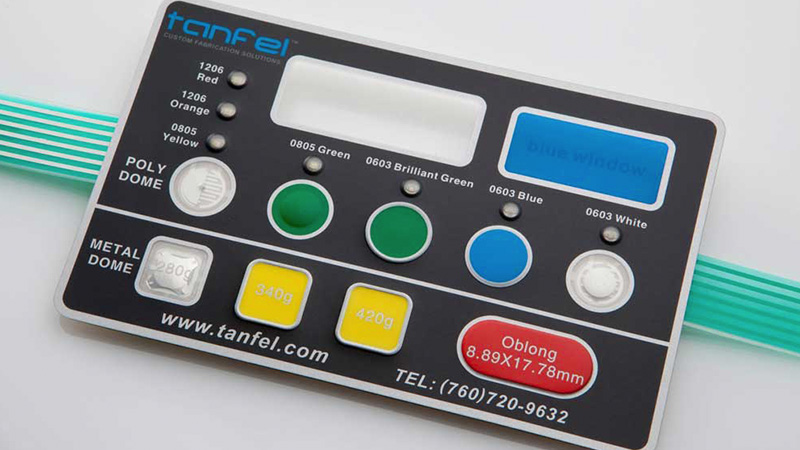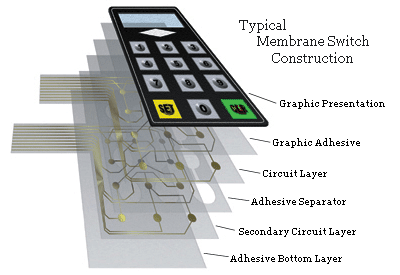Exploring the Future of Membrane Switches in Emerging Technologies
Discover Just How Membrane Switches Function and Their Duty in Modern Electronics
Membrane Switches represent an innovative combination of innovation and style within the realm of modern electronics, offering as crucial user interfaces in many tools. Included several layers, these switches make use of pressure-sensitive mechanisms to help with customer communication. Their applications span various industries, from customer electronics to clinical equipment, highlighting their adaptability and value. Understanding the details of Membrane switch functionality and their more comprehensive ramifications in boosting user experience welcomes additional expedition into their design, benefits, and the ingenious advancements shaping their future in innovation.
What Are Membrane Switches?

Membrane switches are identified by their durability and resistance to environmental elements, such as dirt, wetness, and extreme temperature levels. They can be tailored with numerous graphics, shades, and responsive responses options, enhancing user experience while maintaining aesthetic appeal - membrane switches. Moreover, the unification of published circuits enables seamless integration into devices, improving general performance.
The convenience of Membrane buttons is obvious in their capability to sustain both intricate and simple control features. They can integrate features such as LED signs and touch-sensitive modern technology, accommodating specific individual demands. As technology remains to progress, Membrane Switches continue to be necessary for enabling efficient and user-friendly individual interfaces, thus playing an essential duty in the innovation of modern digital devices.
Parts of Membrane Switches
Membrane buttons are composed of a number of essential components that function together to develop a useful and dependable interface. The primary aspects include the graphic overlay, glue layer, spacer layer, and conductive traces.
The visuals overlay acts as the individual interface, usually published on a versatile substratum such as polyester or polycarbonate. This layer not only offers aesthetic allure yet likewise includes responsive responses, aesthetic hints, and protective features. Below the visuals overlay lies the glue layer, which secures the button to the gadget and ensures resilience versus ecological anxieties.
The spacer layer is important for preserving the necessary void in between the graphic overlay and the circuit layer. This gap permits the activation of the button when stress is applied. The conductive traces, normally made from silver or carbon, form the electrical pathways that finish the circuit when the switch is involved.
In addition, a backing layer might be consisted of for architectural support and insulation. These elements collaborate effortlessly, making sure that Membrane buttons are both straightforward and resilient, making them crucial in different modern digital applications.
Exactly How Membrane Switches Job
How do Membrane Switches function effectively within electronic tools? Membrane Switches operate on the principles of pressure-sensitive modern technology, making use of a layered construction that consists of visuals overlays, adhesive layers, and conductive elements.
The style of Membrane buttons is important for their efficient procedure (membrane switches). The layers are meticulously engineered to provide responsive responses, sturdiness, and resistance to ecological factors such as dampness and dirt. The incorporation of have a peek here domes-- small, increased locations within the button-- enhances tactile response, supplying customers with a noticeable click experience upon activation
Moreover, Membrane switches can be tailored in terms of dimension, form, and graphics, making them appropriate for various applications. They are typically made use of in control panels, medical tools, and consumer electronics due to their sleek layout and reliability. Generally, the reliable functioning of Membrane buttons is critical in improving individual interaction and ensuring seamless procedure in modern-day electronic tools.

Applications in Modern Devices
Using their one-of-a-kind design and functionality, Membrane switches have become indispensable components in a vast range of modern-day electronic tools. These flexible user interfaces are used in consumer electronic devices, industrial devices, medical devices, and auto controls, providing smooth individual communication.
In consumer electronics, Membrane switches are commonly located in appliances like microwaves, cleaning devices, and various other household tools, where they make it possible for user-friendly control with a sleek account. Their low-profile design helps with assimilation right into portable gadgets, improving aesthetic charm without compromising performance.
In commercial applications, Membrane Switches work as control panels for machinery, using resilience and resistance to severe environments. Their capacity to hold up against dampness and pollutants makes them optimal for use in production and handling sectors.
Clinical gadgets also gain from Membrane switches, which are created to be simple to clean and keep, making sure health in professional setups. They are frequently used in analysis tools, person surveillance systems, and portable clinical gadgets, where integrity is vital.
Advantages of Membrane Switches
One of the key advantages of Membrane buttons is their flexibility, which permits them to be tailored for a selection of applications across numerous industries. These buttons can be designed in numerous shapes and dimensions, accommodating special item demands while giving seamless assimilation into devices. Their slim profile allows a streamlined and small style, frequently improving the visual charm of digital items.
Another significant advantage is their toughness - membrane switches. Membrane switches are generally immune to dirt, moisture, and chemicals, making them excellent for severe atmospheres. This resilience prolongs their life-span compared to conventional mechanical buttons, decreasing the demand for frequent replacements
Furthermore, Membrane Switches deal cost-effectiveness. The production procedure involves printing technologies that decrease production costs, especially for big runs. This price, combined with reduced upkeep requirements, makes them an appealing choice for producers.

Final Thought
Finally, Membrane Switches stand for a substantial advancement he has a good point in interface webpage modern technology within contemporary electronics. Their layered construction, pressure-sensitive operation, and versatility to numerous applications emphasize their relevance throughout numerous markets. The longevity and ecological resistance of Membrane Switches further enhance their appeal, making them a preferred choice for suppliers looking for personalized and reliable remedies. As the demand for durable and user-friendly interfaces remains to expand, the duty of Membrane buttons fit individual experience will most certainly broaden.
Membrane Switches represent an innovative assimilation of innovation and style within the realm of contemporary electronics, offering as crucial interfaces in numerous gadgets.In the world of modern electronic devices, Membrane Switches serve as essential elements that promote individual communication with devices. As modern technology continues to evolve, Membrane Switches continue to be vital for making it possible for reliable and instinctive user interfaces, therefore playing a critical duty in the improvement of modern electronic devices.
Exactly how do Membrane Switches feature properly within electronic gadgets? On the whole, the efficient performance of Membrane buttons is critical in improving customer interaction and making sure smooth procedure in modern electronic tools.